#american culture in the 1910s
Text

Florence Davey
Artist: George Wesley Bellows (American, 1882 - 1925)
Genre: Portrait
Date: 1914
Medium: Oil on Panel
Collection: National Gallery of Art, Washington, DC
Florence Sittenham Davey (Mrs. Randall Davey)
Painted on Monhegan Island in Maine in August 1914, this portrait represents Florence Sittenham Davey, the wife of Bellows’ friend, the artist Randall Davey. Florence Davey was a modernist sculptor who had studied with Alexander Archipenko. According to the Davey's son William, Bellows lost a considerable amount of money to his father playing pool and painted the portrait to settle his debt.
#portrait#george bellows#florence davey#fashion#woman#american art#realism#people#1910's#early 20th century#american culture#american painter#yellow chair#hat#maine#sculptor#artist
1 note
·
View note
Text
What i've been learning thru my research is that Lawn Culture and laws against "weeds" in America are deeply connected to anxieties about "undesirable" people.
I read this essay called "Controlling the Weed Nuisance in Turn-of-the-century American Cities" by Zachary J. S. Falck and it discusses how the late 1800's and early 1900's created ideal habitats for weeds with urban expansion, railroads, the colonization of more territory, and the like.
Around this time, laws requiring the destruction of "weeds" were passed in many American cities. These weedy plants were viewed as "filth" and literally disease-causing—in the 1880's in St. Louis, a newspaper reported that weeds infected school children with typhoid, diphtheria, and scarlet fever.
Weeds were also seen as "conducive to immorality" by promoting the presence of "tramps and idlers." People thought wild growing plants would "shelter" threatening criminals. Weeds were heavily associated with poverty and immortality. Panic about them spiked strongly after malaria and typhoid outbreaks.
To make things even wilder, one of the main weeds the legal turmoil and public anxiety centered upon was actually the sunflower. Milkweed was also a major "undesirable" weed and a major target of laws mandating the destruction of weeds.
The major explosion in weed-control law being put forth and enforced happened around 1905-1910. And I formed a hypothesis—I had this abrupt remembrance of something I studied in a history class in college. I thought to myself, I bet this coincides with a major wave of immigration to the USA.
Bingo. 1907 was the peak of European immigration. We must keep in mind that these people were not "white" in the exact way that is recognized today. From what I remember from my history classes, Eastern European people were very much feared as criminals and potential communists. Wikipedia elaborates that the Immigration Act of 1924 was meant to restrict Jewish, Slavic, and Italian people from entering the country, and that the major wave of immigration among them began in the 1890s. Almost perfectly coinciding with the "weed nuisance" panic. (The Immigration Act of 1917 also banned intellectually disabled people, gay people, anarchists, and people from Asia, except for Chinese people...who were only excluded because they were already banned since 1880.)
From this evidence, I would guess that our aesthetics and views about "weeds" emerged from the convergence of two things:
First, we were obliterating native ecosystems by colonizing them and violently displacing their caretakers, then running roughshod over them with poorly informed agricultural and horticultural techniques, as well as constructing lots of cities and railroads, creating the ideal circumstances for weeds.
Second, lots of immigrants were entering the country, and xenophobia and racism lent itself to fears of "criminals" "tramps" and other "undesirable" people, leading to a desire to forcefully impose order and push out the "Other." I am not inventing a connection—undesirable people and undesirable weeds were frequently compared in these times.
And this was at the very beginnings of the eugenics movement, wherein supposedly "inferior" and poor or racialized people were described in a manner much the same as "weeds," particularly supposedly "breeding" much faster than other people.
There is another connection that the essay doesn't bring up, but that is very clear to me. Weeds are in fact plants of the poor and of immigrants, because they are often medicinal and food plants for people on the margins, hanging out around human habitation like semi-domesticated cats around granaries in the ancient Near East.
My Appalachian ancestors ate pokeweed, Phytolacca americana. The plant is toxic, but poor people in the South would gather the plant's young leaves and boil them three times to get the poison out, then eat them as "poke salad." Pokeweed is a weed that grows readily on roadsides and in vacant lots.
In some parts of the world, it is grown as an ornamental plant for its huge, tropical-looking leaves and magenta stems. But my mom hates the stuff. "Cut that down," she says, "it makes us look like rednecks."
9K notes
·
View notes
Text
Some historical clothing enthusiasts who AREN'T White because I'm sick of seeing White girls in 19th century clothes:
SewRena: specializes in 1950s American sewing & clothing, she is Black
Cosplay Queen: Chinese youtuber who does stuff like makeup, Hanfu of various time periods, Chinese classical dance, & cosplay. Also does a lot of Mukbang vids
MochiHanfu: another Chinese youtuber who specializes in Hanfu
NamiSparrow: Indian cosplayer who has some vids up about historic Indian fashion & sewing
Notyourmommashistory: Black reenactor who does vids on 1800s fashion, slavery in the 1800s, racism, vintage clothing, & also some cool video essays.
Cheon-Shik Yang: he is a Korean tailor who talks about Hanbok & traditional Korean clothing
Fashion & Culture with Kingsley: focuses a bit more on contemporary African clothing & fashions & geared towards fashion designers, but inspired by traditional African designs (from different countries and cultures, such as Ghana, Ethiopia, & Senegal) and clothing & a bit of historic ones as well.
The Couture Courtesan: mixed race Asian reenactor and historical fashion enthusiast who talks about fashions of various time periods, as early as the Tudor era up to the 1910s.
Eccentrik: Jamaican youtuber with vids focusing on fashion, & in particular either vintage fashion (I believe 1940s-60s), pinup fashion & hair & makeup, or vintage inspired sewing
Ora Lin: a nonbinary tailor (who I believe is Asian), they make videos about sewing & historical fashion of different periods & places, including Regency England, Jin & Ming dynasty China, the Edwardian era, & more.
Honorable mention: Snappydragon not a person of color, but she is Jewish & focuses on European historical fashion & Jewish historical fashion (including time periods the Jewish population would not be considered "White")
6K notes
·
View notes
Text
Errors, “Errors,” and Sci Fi
@strawberry-crocodile
tvtropes calls stuff like the wolf example "science matches on" which I think is a pretty fair shake
This. This is what’s got me thinking so much about errors. There’s a certain danger, here. A certain way that this particular effect — delicious dramatic irony — tempts the mind when reading old stories, even true ones.
What do you know about R.M.S. Titanic? I ask my class every year, and the first hand rises. “It was unsinkable,” the student inevitably says, and everyone is nodding, “or so they thought.” I write the word UNSINKABLE on the board, underneath my crude drawing of a ship with four smokestacks. It will be crossed out before the end of the hour, but not for the reason they expect.
“I find no evidence,” Walter Lord, preeminent biographer of the ship’s survivors, wrote, “that Titanic was ever advertised as unsinkable. This detail seems to have entered the collective mind so as to create a more perfect irony.” Indeed, historians’ examinations of White Star Line documents show the shipbuilders themselves worried it would be so large as to risk collision; they stocked several more lifeboats than 1910s regulations required.
The War to End All Wars (deep breath, satisfied exhale), also known as World War ONE. Chuckle. Shake of the head. What if I told you that this phrase, used primarily in American newspapers after the fact, wasn’t meant to be literal? Nowadays we’d say The Mother of All Wars, or One Hell of a Fucking War, but we wouldn’t mean literal motherhood, literal intercourse. What if I said the armistice and the Lost Generation and the Roaring 20s were all braced for another outbreak of European conflict, and yet we still failed to prevent it?
Did you know they were so confident in the safety of the S.S. Challenger that they put a civilian schoolteacher onboard? I do, because I’ve heard that one repeated many times. Only, see, it’s got the cause and effect reversed. Challenger launched on a day the shuttle’s engineers knew to be dangerously cold, because the first civilian in space was on board. And NASA knew its shuttle project would be cancelled entirely, if they couldn’t get that civilian’s much-delayed entry into space in the next two weeks. So they launched on a cold day, and killed her instead.
These are all what cognitive science calls Hindsight Bias on the personal level, what sociology calls Presentism on the cultural level. Social psychology’s a little of both, is primarily interested in why you’re sitting on your couch in a Colonize Mars shirt watching PBS and chuckling at the fools who believed in El Dorado. It wants to know why the mind flees straight from “marijuana will kill you” to “marijuana will cure cancer” without so much as a pause on the middle ground of its real benefits and drawbacks, its real (mild) risks and rewards.
And they can paralyze the sci-fi writer, if you think too much about them. Jetsons is futurist one decade, retro the next. “There are no bathrooms on the Enterprise,” the creators of Serenity say smugly, as if Gene Roddenberry should’ve simply known that decades later it’d be acceptable to show a man peeing in full view of the camera, nothing but the curve of the actor’s hand to protect his modesty. “No sound in space,” the Fandom Menace says, “No explosions in space,” and “A space station can’t collapse in zero-G.” Only then NASA burns a paper napkin outside of atmosphere, transmits music using only the ghost of nearby planets’ gravities, and logs onto Reddit long enough to point out the Death Star would implode in its own gravity field. And now we’re the ones pointing, the ones laughing, at those earlier point-and-laughers. Self-satisfied, smug in superiority. As if we did the work to find out ourselves, instead of just happening to be born a little later than George Lucas.
#errors#continuity#sci fi#presentism#star wars#titanic#world war i#science marches on#history#started a new post because i got waaaaaay off topic here#if you think the dinosaurs in Jurassic Park (1993) should've had feathers#you're a lot more ignorant about paleontology than the people you're trying to criticize#science was not handed down to us in its perfect complete form circa 1943#stop for a second before you call out someone else's reptilian denonychus#someone else's oxygenated moon#and ask: am i better read#or am i just more recently born?
2K notes
·
View notes
Text
"The knife is a weapon of the Other"


"The emerging martial art of Bartitsu, appearing in middle-class magazines during the Boer War, was the encapsulation of British civilian gallantry. Yet Bartitsu would have slid into obscurity had it not been for its curious appearance in the Sherlock Holmes canon. The final showdown of the ‘duel’ between Holmes and Moriarty is a wrestling match between two Victorian masterminds. When Holmes returns to London he tells Watson that he and Moriarty went to battle at the Reichenbach Falls unarmed. Holmes managed to ‘slip through’ Moriarty’s grip as he possessed ‘some knowledge’ of ‘baritsu, or the Japanese system of wrestling’, adding that the art had on occasion been useful to him.
Founded in the 1890s by an Anglo-Scottish engineer, Edward William Barton-Wright (1860–1951), Bartitsu was a synthesis of British boxing, French la savate (kickboxing) and Japanese jujitsu. Barton-Wright tapped into the need for a bourgeois form of self-defence, something which he could promote as being British and yet was also exotic and refined.
The principal aim of Bartitsu’s promoters was ‘to provide a means whereby the higher classes of society may protect themselves from the attacks of hooligans and their like all over the world’. These urban gangs were a new form of folk devil, descendants of the mid-Victorian-era garotter. While they were armed with clubs, knuckles, iron bars and leather belts, it is doubtful that they carried firearms. Nevertheless, the press did represent the hooligan as a threatening presence.
Perhaps the scares promoted the growth of a burgeoning culture of ‘British’ self-defence which avoided the aggressive and increasingly unmanly action of using a firearm against a ruffianly lower-class opponent equipped only with basic weapons.
Barton-Wright follows a literary tradition when he presents his martial art as a British form of self-defence. Pierce Egan’s well-known self-defence manual was supplemented with a word on the ‘Englishness’ of physical heroism, arguing that ‘Englishmen need no other weapons in personal contests than those which nature has so amply supplied them with’. In 1910 the former lightweight boxing champion Andrew J. Newton said in his manual Boxing that ‘the native of Southern Europe flies to his knife’, whereas the ‘Britisher […] is handy with his fists in an emergency’. Elsewhere it was maintained that the ‘Italian, Greek, Portuguese, or South American’ ‘give preference to the knife’ while the Englishman extols boxing. For Barton-Wright, British boxers ‘scorn taking advantages of another man when he is down’, while a foreigner might ‘use a chair, or a beer bottle, or a knife’ or, ‘when a weapon is available’, he might employ ‘underhanded means’. The views of these articles reappear in a later self-defence manual of 1914, where it is argued that Britons ‘live in a country where knife and revolver are not much in evidence’. This statement about the low number of firearms and edged weapons can be read as an attempt to extol British virtues and is not necessarily representative of reality. The knife is a weapon of the Other. Barton-Wright’s view that English practitioners of Bartitsu are principled men is reflected in the Sherlock Holmes canon, where Holmes never uses a knife, although his enemies, whether foreign or British, do so at times."
— Emelyne Godfrey, Masculinity, Crime and Self-Defence in Victorian Literature (Palgrave Macmillan, 2013) (very abridged)
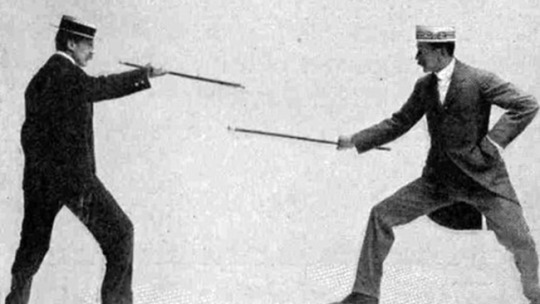
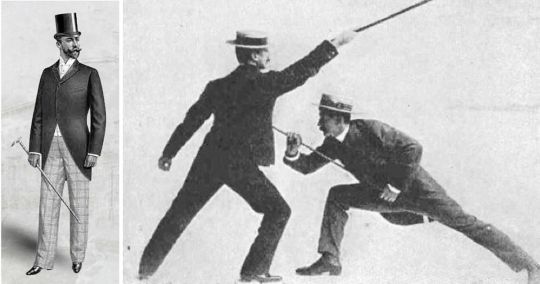
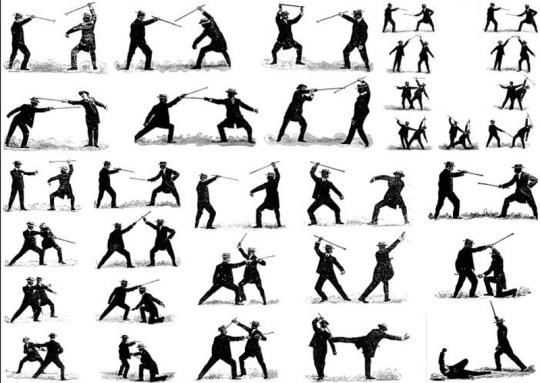
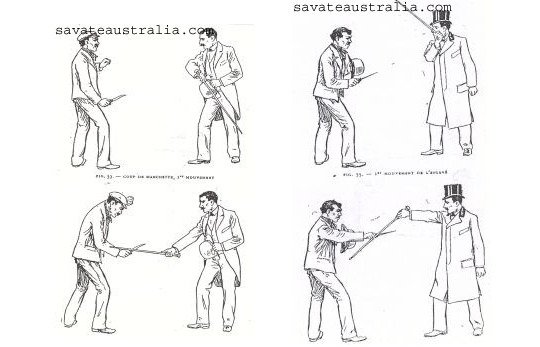
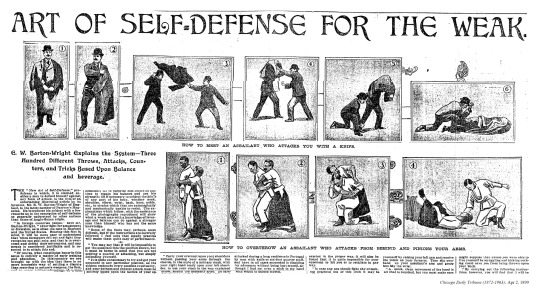
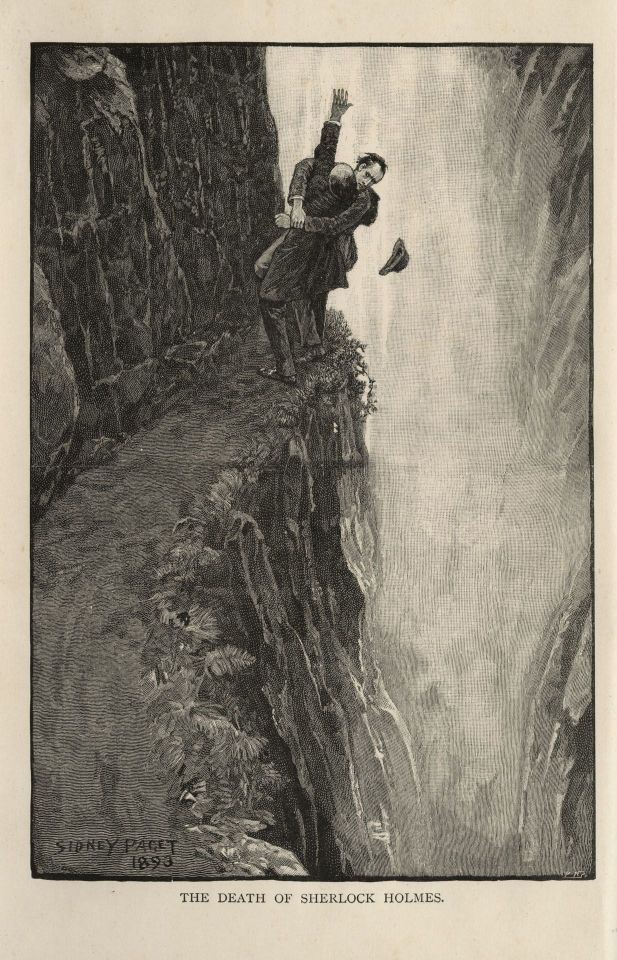
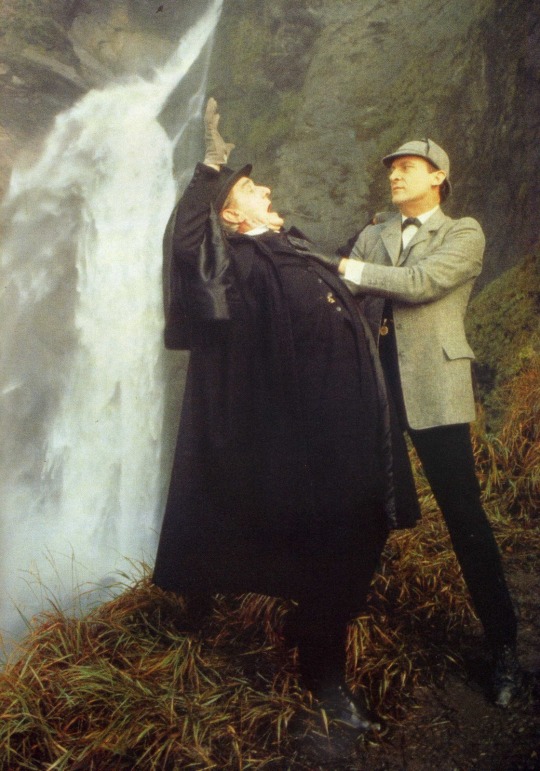
#Masculinity Crime and Self-Defence in Victorian Literature#Emelyne Godfrey#theory#how to stab#sherlock holmes#arthur conan doyle#bartitsu#rogues in fiction#moral panics#dishonour on your cow
614 notes
·
View notes
Text
LGBT literature of the 1860s–1910s. Part 5
After a long pause, the list is back! Here we have a couple of plays, accounts by two trans women, lesbian poetry, and more.
1. Despised and Rejected, by A.T. Fitzroy (Rose Allatini; 1918). A pacifist novel published during World War One? With gay and lesbian characters? Yes, that was sure to get people in trouble. Its publisher was fined and the judge called it “morally unhealthy and most pernicious”. So, Dennis is a young composer who hates violence and therefore refuses to go to war. He also suffers because he is a “musical man”, that is, gay, and loves Alan, art-loving son of a wealthy businessman. His friend Antoinette, meanwhile, is “strangely attracted” to a woman. Nevertheless, the two attempt to love each other. When the war begins, Alan appears in Dennis’ life again, and they try to avoid being sent to the front together. Alan also persuades Dennis to accept who he is. Edward Carpenter himself defended the novel, saying that “the book is also a plea for toleration of a very much misunderstood section of humanity”.
Read online
2. Autobiography of an Androgyne, by Ralph Werther (1918). Ralph Werther, also known as Jennie June, wrote this autobiography for doctors, and it is very revealing. Being a New York fairy (male prostitute) and possibly a trans woman, they tell frankly about the city’s gay underworld of the early 20th century and their personal experience, which is sometimes too frank and dark perhaps, but all the more interesting.
Read online
3. Poems by Mikhail Kuzmin. Kuzmin was not just the author of Russia’s first gay novel, but also a poet. Many of his works were dedicated to or mentioned his lovers. I’d recommend Where Will I Find Words (in English and Russian), Night Was Done (both in English and Russian), from the 1906-1907 collection Love of This Summer (available fully in Russian), mostly based on his love affair with Pavel Maslov in 1906. And also If They Say (in English and Russian), which is a great statement.
4. The Loom of Youth, by Alec Waugh (1917). A semi-biographical novel based on Evelyn Waugh’s older brother’s experience at Sherborne School in Dorset. It is a story of Gordon Caruthers’ school years, from the age of 13 to 19, and it is full of different stories typical for public schools, be it pranks and cheating exams or dorm life and sports. Although the homosexual subject was quite understated, the author implied that it was a tradition and open secret in public schools. The book became popular and soon caused a great scandal. Worth noting that before that Alec was expelled for flirting with a boy.
Read online
5. Two Speak Together, by Amy Lowell (1919). Lowell was a famous American poet and lesbian. Many of her poems were dedicated to her lover, actress Ada Dwyer Russell, specifically the section Two Speak Together from Pictures of the Floating World. These poems are infused with flower imagery, which wasn’t uncommon for lesbian poetry of the time.
Read online
6. De berg van licht/The Mountain of Light, by Louis Couperus (1905-1906). Couperus is called the Dutch Oscar Wilde for a reason: this is one of the first decadent novels in Dutch literature. It is also a historical one, telling about a young androgynous Syrian priest Heliogabalus who then becomes a Roman Emperor. Homoerotism, hedonism, aestheticism: Couperus creates a very vivid world of Ancient Rome. He also covered the topic of androgyny in his novel Noodlot, which was mentioned in Part 3 of this list.
Read online in Dutch
7. Frühlings Erwachen/Spring Awakening/The Awakening of Spring, by Frank Wedekind (1891, first performed in 1906). This play criticized the sexually oppressive culture prevalent in Europe at the time through a collection of monologues and short scenes about several troubled teens. Each one of them struggles with their puberty, which often leads to a tragic end. Like in The Loom of Youth, homosexuality is not the central focus of the play, but one character, Hänschen, is homosexual and explores his sexuality through Shakespear and paintings. The play was later turned into a famous musical.
Read online in German or in English
8. Twixt Earth and Stars, by Radclyffe Hall (1906). Though it wasn’t known to many at the time, these poems were dedicated to women, some to Hall’s actual lovers.
Read online
9. The Secret Confessions of a Parisian: The Countess, 1850-1871, by Arthur Berloget (published in 1895). This account is similar to the Autobiography of an Androgyne, albeit shorter. The author nowadays is thought to be a trans woman. They describe their love for women’s dresses, the euphoria from wearing dresses, makeup and wigs, the life as a “female impersonator” in Parisian cafe-concerts, and their love affair with a fellow prisoner. The autobiography is not available online, but you can read it in Queer Lives: Men’s Autobiographies from Nineteenth-Century France by William Peniston and Nancy Erber.
10. At Saint Judas’s, by Henry Blake Fuller (1896). This is possibly the first American play about homosexuality. It is very short. An excited groom is waiting for his wedding ceremony in the company of his gloomy best man. They are former lovers, and this short scene is not going to end well…
Read online
Previous part is here
#lgbt literature#lgbt fiction#queer history#queer fiction#lesbian literature#russian literature#gay literature#gay history#spring awakening#lesbian history#blog: history#blog: literature
320 notes
·
View notes
Text

Winslow Homer (1836-1910)
"Dressing for the Carnival" (1877)
Oil on canvas
Realism
Located in the Metropolitan Museum of Art, New York City, New York, United States
In this Reconstruction-era painting, Homer evokes the dislocation and endurance of African American culture that was a legacy of slavery. The central figure represents a character from a Christmas celebration known as Jonkonnu, once observed by enslaved people in North Carolina and, possibly, eastern Virginia. Rooted in the culture of the British West Indies, the festival blended African and European traditions. After the Civil War, aspects of Jonkonnu were incorporated into Independence Day events; the painting’s original title was Sketch—4th of July in Virginia. The theme of independence was particularly relevant in 1877, when emancipated Black Americans in the South saw an end to their brief experience of full civil rights with the final withdrawal of federal troops.
#paintings#art#artwork#genre painting#genre scene#winslow homer#oil on canvas#fine art#realism#the metropolitan museum of art#the met#museum#art gallery#history#african american#black people#clothing#clothes#family#children#slavery#jamaica#caribbean#1870s#late 1800s#late 19th century
80 notes
·
View notes
Note
there was Chinese interest in the Out Of Asia theory, in both the Republic, Chiang Republic and People’s Republic periods before the Out Of Africa theory became commonly accepted. Was the 1954 Yeti expedition done just from the Nepalese-Indian side or were the American agents and “anthropologists” given access on the Sino-Tibetan side of the Himalayan border?
During the early part of this century, it was absolutely believed for a long time that the deserts of Western China were the most likely place of human origins, as seen in this migration map from 1944, made from the best available knowledge of the time:
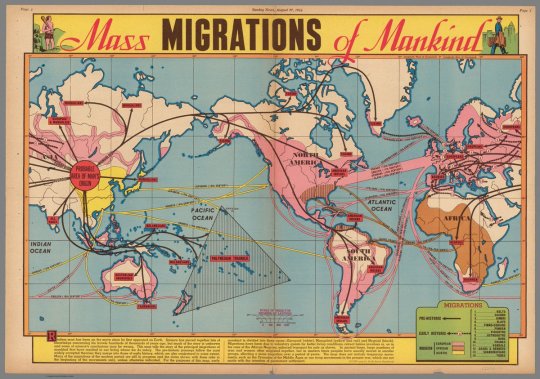
Remember, the oldest fossil remains at this point were in China, where Homo erectus was discovered (originally known by his initial place of discovery in Chungkotien Cave, nicknamed "Peking Man"). The discovery of Australopithecus and Homo habilis in Olduvai Gorge and South Africa, which place human origins in Africa, were not until the 50s and 60s, so it seemed entirely reasonable that Homo sapiens evolved in Western China.
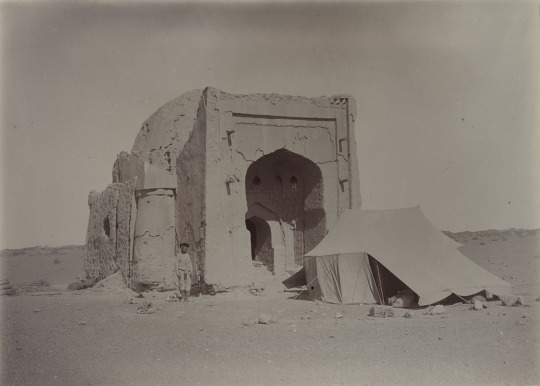
The idea that China's desert regions were the origin of modern humans and culture is seen a lot in pop culture from 1900-1950, mainly because there were tremendous explorations in the region, especially Aurel Stein's expedition of 1908, who ventured into the Taklamakan Desert to find the Dunhuang Caves and Khara-Khoto, a city destroyed completely by Genghis Khan and vanished in the desert.
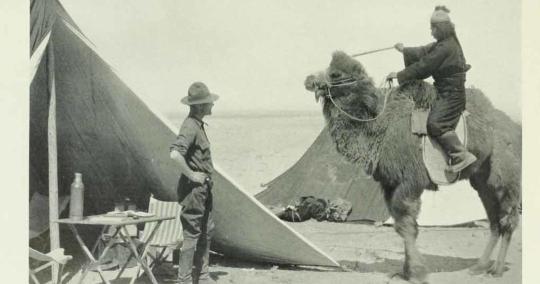
If you've ever heard of Roy Chapman Andrews and his famous expeditions in the 1920s, it's worth noting that he ventured into the Gobi Desert looking for human remains....not dinosaurs, and the discovery of dinosaur eggs was an unexpected surprise.

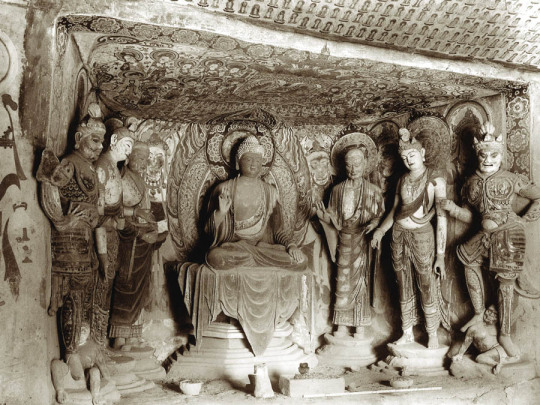
For that reason, there was a short lived Silk Road Mania that seemed to be a smaller scale predecessor to the pop culture dominating Egyptomania of the 1920s. It's bizarre to read adventure and fantasy fiction of the 1910s-1920s that features mentions of Silk Road peoples like the Kyrgyz, Sogdians, Tajik, Uigurians, and Tuvans. The best example I can think of would be the Khlit the Kossack stories of Harold Lamb (who also wrote a biography of Tamerlane), which together with Tarzan and Tros of Samothrace, formed the core inspiration for Robert E. Howard's Conan the Barbarian.
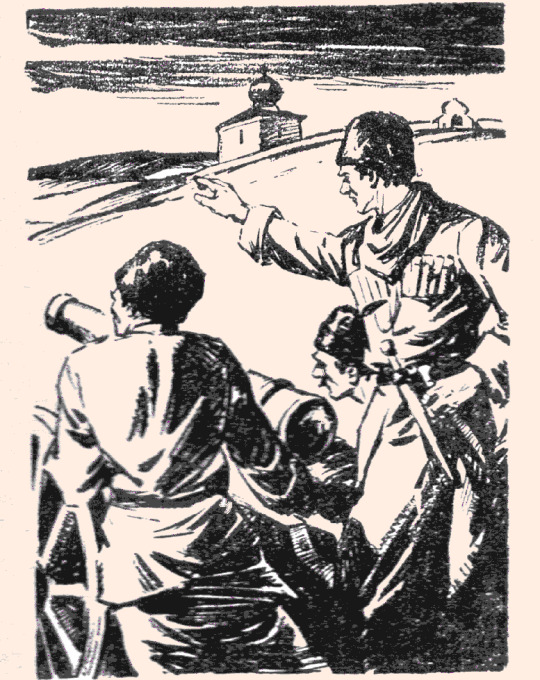
The most interesting example of this would be A. Merritt's Dwellers in the Mirage, which featured a lost city in Xinjiang that was the home of the Nordic race, who worshipped their original religion, the kraken-like squid devil god Khalkru. It was widely believed in this era that Nordics emerged from Central Asia originally, and while it's easy to write this off as turn of the century racialist claptrap pseudohistory (along with Hyperborea legends), in this case, it is actually true: a branch of the Indo-European family lived in West China, and 5,000 year old redheaded mummies have been found in the region. As usual, A. Merritt was right on the money with his archeology, more so than other 1920s authors. After all, his "Moon Pool" was set around the just discovered ruins of Nan Madol, the Venice of Micronesia.

Jack Williamson's still chilling Darker Than You Think in 1948 was also set in the Silk Road/Central Asian region, as the place the race of shapeshifters emerged from, Homo magi, who await the coming of their evil messiah, the Night King, who will give them power over the human race.
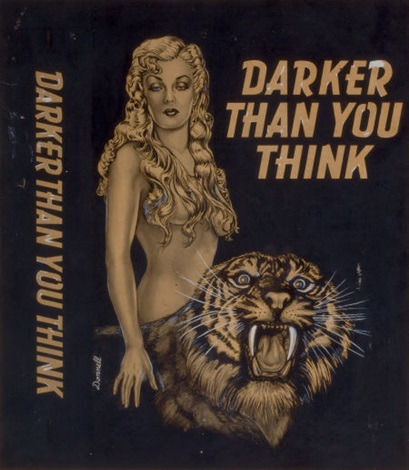
H. Rider Haggard set "Ayesha: the Return of She" (1905) in Xinjiang, among a lost Greek colony in Central Asia (no doubt based on Alexandria on the Indus, a Greek colony in modern Pakistan that was the furthest bastion of Greek Culture). This was also two years after the Younghusband Thibetan Expedition of 1903, where the British invaded Tibet. At the time, the Qing Dynasty was completely declining and lost control of the frontier regions, and the power vacuum was filled by religious authority by default (this is something you also saw in Xinjiang, where for example, the leader of the city was the Imam of Kashgar).
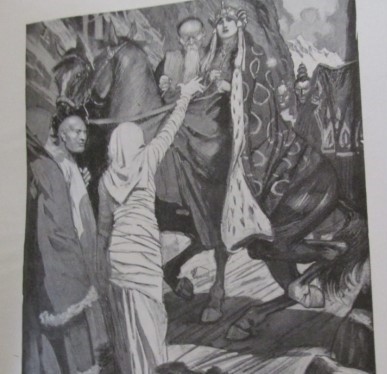
This is one of the many British invasions they have attempted to cram down the memory hole, but if you ever see a Himalayan art piece that was "obtained in 1903-1904" ....well, you know where it came from.
Incidentally, there's one really funny recent conspiracy theory about paleontology, fossils, and China that I find incredibly interesting: the idea that dinosaurs having feathers is a lie and a sinister plot spread by the Communist Chinese (who else?) to make American youth into sissy fancylads, like Jessie "the Body" Ventura. How? By lying to us and making up that the manly and vigorous Tyrannosaurus, a beast with off the charts heterosexuality and a model for boys everywhere, might have been feathered like a debutante's dress. What next - lipstick on a Great White Shark? The long term goal is to make Americans effeminate C. Nelson Reilly types unable to defend against invasion. This is a theory that is getting steam among the kind of people who used to read Soldier of Fortune magazine, and among abusive stepfathers the world over.

...okay, are you done laughing? Yeah, this is obvious crackpottery and transparent sexual pathology, on the level of the John Birch Society in the 60s saying the Beatles were a Communist mind control plot. Mostly because animals just look how they look, and if it turned out that the ferocious Tyrannosaurus had feathers and looked like a fancylad Jessie Ventura to you, well, that's your problem and mental baggage, really.
I was left scratching my head over this one. But there is (kind of) something to this, and that is that a huge chunk of recent dinosaur discoveries have been in China. I don't think it has anything to do with a Communist plot to turn American boys into fancylads, but more to do with a major push in internal public investment in sciences in that country, and an explosion of Chinese dinosaur discoveries. If you want to see a great undervisited dinosaur museum, go to the Zigong Dinosaur Museum in Sichuan.

Pop quiz: what living scientist has named more dinosaur discoveries? It's not Bakker or Horner. The greatest living paleontologist, Xu Xing, which is why a lot of recently found dinosaurs are named things like Shangtungasaurus.
250 notes
·
View notes
Note
i saw your tag about how in 500 years we WON'T be calling britney spears' "toxic" classical music, and i am willing and able to hear this rant if you so wish to expand upon it :3c
You know what, it's been over six months, so sure, why not, let's pick today to have this rant/lesson!
To establish my credentials for those unfamiliar Hi my name's Taylor I was a music teacher up until last year when the crushing realities of the American Education SystemTM led me to quit classroom work and become a library clerk instead. But said music teaching means that I have 4+ years of professional classical training in performance and education, and while I'm by no means a historian, I know my way around the history of (european) music.
So, now that you know that I'm not just some rando, but a musical rando, let me tell you why we won't be calling Britney Spears or [insert modern musician(s) that'd be especially humorous to today's audience to call classical] "classical music."
The simple answer is that "Old music =/= Classical music," which is usually the joke being made when you see this joke in the first place.
youtube
As funny as this joke can be when executed well (this is one of my favorite versions of said joke, especially since this is a future world where there's very little accurate surviving info about the culture from the 21st century), there is VERY little likely of this actually being how music from today is referred to in the future, because, again, music being OLD does not automatically make music CLASSICAL.
If you'd indulge me a moment, have a look at these three pieces from the early 1900s, which is now over 100 years ago. That's pretty old! You don't have to listen to the whole of all of them if you don't want to, but give each around 30 seconds or so of listening.
youtube
youtube
youtube
All three pieces are over 100 years old, but would you call "In the Shade of the Old Apple Tree" classical? Or "The Entertainer?" Most likely not. You'd probably call these songs "old timey" and you may even be savvy enough to call "The Entertainer" by it's actual genre name, ragtime. But if either of these songs came on the radio, you wouldn't really call them classical, would you? They're just old.
Whereas Mahler's Symphony No. 5, now that sounds like classical music to you, doesn't it? It's got trumpets, violins, a conductor, it's being played by a philharmonic! That's a classical musicy word!
The short answer of why we in the real, nonfictional world won't be calling Britney Spears's "Toxic" classical music in 100 years is it simply doesn't sound like classical music.
.....and the long answer is that Mahler's Symphony No. 5 isn't actually classical either.

See, music, just like everything in culture from dress to art to architecture changed with the times, and therefore 'classical music' is technically (although not colloquially) only one of about four to five musical periods/styles you're likely to hear on one of those "classical music tunes to study to" playlists.
Our dear friend Mahler up there was not a classical composer, he was a composer of the late romantic era.
So now, because I have you hostage in my post (just kidding please don't scroll away I had a lot of fun writing this but it took me nearly 3 hours) I'm going to show you the difference between Classical music and the other musical eras.
These are the movements we'll be dealing with, along with the general dates that define them (remembering of course that history is complicated and the Baroque Period didn't magically begin on January 1st, 1600, or end the moment Bach died) :
The Baroque Period (1600-1750)
The Classical Period (1750-1820)
The Romantic Period (1820-1910)
The Impressionist Movement (1890-1920)
You'll notice that as time goes on, the periods themselves grow shorter, and there starts to become some overlap in the late 19th to early 20th century. The world was moving faster, changing faster, and music and art began changing faster as well. Around the beginning of the 20th century music historians quit assigning One Major style to an entire era of history and just started studying those movements themselves, especially since around the 20th century we were getting much more experimentation and unique ideas being explored in the mainstream.
Even the end of the classical to the beginning of the romantic period can get kind of fuzzy, with Beethoven, arguably one of the most famous classical (and yes he was actually classical) composers in history toeing the line between classical and romantic in his later years. The final movement of his 9th symphony, known as Ode to Joy, far more resembles a romantic work than a classical one.
But, I'm getting ahead of myself.
To oversimplify somewhat, here are the main characteristics of said movements:
The Baroque Period (1600-1750)
Music was very technical and heavily ornamented. This coincided with a very "fancy" style of dress and decoration (the rococo style became popular towards the latter half of this period). The orchestras were far smaller than we are used to seeing in concert halls today, and many instruments we consider essential would not have been present, such as the french horn, a substantial percussion section, or even the piano*. Notable composers include Vivaldi (of the Four Seasons fame), Handel (of the Messiah fame) and Bach:
youtube
*the piano as we know it today, initially called the pianoforte due to its ability to play both softly (piano) and loudly (forte) in contrast to the harpsichord, which could only play at one dynamic level, was actually invented around 1700, but didn't initially gain popularity until much later. This Bach Concerto would have traditionally been played on a harpsichord rather than a piano, but the piano really does have such a far greater expressive ability that unless a group is going for Historical Accuracy, you'll usually see a piano used in performances of baroque work today.
The Classical Period (1750-1820)
In the classical period, music became more "ordered," not just metaphorically but literally. The music was carefully structured, phrases balanced evenly in a sort of call and response manner. Think of twinkle twinkle little star's extremely balanced phrasing, itself a tune that Mozart took and applied 12 classical variations to, cementing it in popularity.
And speaking of twinkle twinkle, memorable melody became more important to the composition than ornamentation, and many of our most universally known melodies in the west come from this period. The orchestra also grew bigger, adding more players of all kinds as now we didn't have to worry about overpowering the single-volume harpsichord, and additional instruments like more brass and woodwinds were added. Notable composers include Haydn (of The Surprise Symphony fame) Beethoven (of, well, Fame), and Mozart:
youtube
Pay attention to the size of the orchestra here, then go back to the Bach concerto. Notice how in that very typical Baroque setting, the orchestra sits at maybe 20 people, and that here in a Classical setting, there's nearly two times that!
The Romantic Period (1820-1910)
In the romantic period, it was all about BIG FEELINGS, MAN. It was about the DRAMA. Orchestras got even bigger than before, the music focused less on balance and became more dramatic, and there was a big focus on emotions, individualism, and nationalism. Discerning listeners will notice a lot of similarities between romantic symphonies and modern film scores; John Williams in particular is very clearly influenced by this era, any time I'd play the famous Ride of the Valkyries by Wagner in a class, the kids would remark that it sounds like it should be in Star Wars.
A lot of romantic composers were German, including Beethoven, if you want to call his later works romantic (which I and many others argue you can, again, compare Ode to Joy to one of his earlier works and you can hear and see the difference), but you also have the Hungarian Liszt (of the Hungarian Rhapsodies fame), the Russian Tchaikovsky (of the Nutcracker and 1812 Overture fame), and the Czech Dvořák:
youtube
See how this orchestra is even bigger still? Modern orchestras tend to vary in size depending on what pieces they are playing, but the standard is much closer to this large, romantic size, and it's far less typical to see a small, intimate Baroque setting unless specifically attending a Baroque focused concert.
Also I know I embedded Dvořák because Symphony From a New World slaps but please also listen to Liszt's Hungarian Rhapsody No.2 it's one of my all time favorite pieces and NOT just because of the Tom and Jerry cartoon, alright? Alright.
The Impressionist Movement (1890-1920)
A bit after it began but definitely still during the romantic period, a counter movement began in France that turned away from the emotional excess of romanticism and focused less on standard chord progression and explored more unconventional scales. This music was less worried about how it 'should' sound and was more concerned with evoking a certain emotion or image, giving you an "impression" of an idea. Debussy is by far the most well known name in this movement, even though he personally hated the term 'impressionism,' lol.
youtube
Notice the way the periods build on each other naturally, literally, physically builds on the orchestras that came before, evolving in style and structure until you get to the late 19th and early 20th century when things were built up so big that a response to that excess started to develop, first in the impressionist movement, and then into 20th century music in general, which got much more experimental and, as we say, "weird." (frickin 12 tone scales, man)*
*i do not actually dislike the sound of 12 tone, it's interesting and unique, but it is HELL to analyze in music theory, which is unfortunately when a lot of us classical musicians are first introduced to it, therefore tarnishing our relationship to the genre as we cannot separate it from our own undergrad anguish
Even if you're not a super active listener and you have a harder time discerning the difference between, say, late baroque and early classical, you cannot deny that the first piece I've linked by Bach and the last piece I've linked by Debussy sound completely different. They're both orchestral pieces (I intentionally chose all orchestral pieces as my examples here, getting into solo works, opera, and chamber ensembles would take too long), but other than that, they couldn't be more different.
Wait, so what are we talking about again?
Classical Music is first a period of music, a specific artistic movement with music typically written in Europe between 1750 and 1820 with a specific sound that is distinct from these other styles I've outlined here.
And Classical Music is second a genre. Because while academically and historically Baroque music is not classical, and Romantic music is not classical...colloquially it is. They sound similar enough that it makes sense to put them on the same playlists, the same radio stations, the same 'beats to study to' youtube compilation videos. While individuals may have favorites and preferences, it's not far fetched to say that if you like listening to one of these styles, you'll at least like one of the others.
But whether you're being broad and referring to our modern idea of the classical genre, or you're being pedantic like me and referring to a specific period of musical history (or modern compositions emulating that style, because yeah, modern compositions of all of theses styles do exist), I think we can all agree that, as much as it slaps, "Toxic" by Britney Spears is not classical music, and 500 years is unlikely to change our perspective of that.
A Traditional Ballad though?
Yeah, I can see us calling it that in 5 billion years.
youtube
(the full version of this scene is age restricted for some reason, but you can watch it here)
Anyway, thanks for reading y'all, have a good one!
#music#music theory#music history#classical music#baroque music#romantic music#impressionist music#music teacher#music teaching#taylor teaches#asks and answers#long post
189 notes
·
View notes
Text
Hello darlings! 🏜️
Now that we are well and truly into the 1930s I wanted to give y’all some context about the Darlingtons’ new location. Ultimately, Strangerville is a figment of my imagination, a sims world superimposed into the real world. I did this because I wanted the freedom to draw from different elements of this region’s history and landscape without having to worry about the visual transformation of the actual in-game world.
However, it is very much intended to in a real region of the United States. Specifically, the north west corner of New Mexico, between Albuquerque and Gallup along the newly built Route 66. We’ll see key elements of this in the story time and time again, so if anyone would like more information I’ll leave some maps and context for y’all below the cut:


Commissioned in 1926, Route 66 was actually not the first cross country highway system in the U.S.; however it was designed to traverse the flattest and mildest climates so that it could be the most easily traveled. It also followed popular tourist routes from the railroad days and was marketed as an “All American” experience, drawing travelers and families from across the country and leading to its iconic status even today. The first map shows its path as it would have been in 1930, from its start in Chicago to its end in L.A. and the second map is a cutaway of the specific section of the road between Albuquerque and Gallup where Strangerville is meant to be located.
While the cultural significance of Route 66 now perhaps outweighs its era of utility, the Darlingtons are living along the route as it rises to prominence throughout the 1930s into the 1950s. While it was used for utility and leisure travel from its opening, Route 66, particularly between the Dust Bowl states and California, is iconic for its role as “the Mother Route. Perhaps best typified in John Steinbeck’s Grapes of Wrath, this road became one of if not the primary route for people fleeing the plains states during the Dust Bowl. Through their passage it became an American symbol of desperation, poverty, and for some, the hope of a better life.


Strangerville is meant to be located at the edge of the Dust Bowl (specifically at the meeting of the brown and yellow zones in the first map toward the leftmost mid-top area of the state of New Mexico). This region would not have suffered the worst conditions (and would have been spared intense dust storms) but it is still close enough to be heavily effected. This is especially true in the early part of the decade, as fear of dust tornados and mass unemployment spreads like wildfire, and explains the intense volatility amongst Strangerville residents who have no way to know just how bad their own situation could get.
For larger context, the Dust Bowl was caused by extenuating weather conditions and poor farming practices. It was an agricultural catastrophe throughout the 1930s that displaced millions of people, and coupled with larger economic factors such as the plummet of crop prices, led to mass homelessness, unemployment, and starvation.
Beginning in 1930 but reaching its zenith in the years 1934 and 1936, vast swaths of the United States experienced record drought and heat. In the second map we can see how widespread drought conditions were. They are of course at their worst in the central Dust Bowl area; however we also see that Strangerville is located in a moderate drought, and in 1936 twelve states recorded their highest temperatures to date.
However, these weather conditions only highlighted underlying farming negligence. After decades of manifest destiny and an influx of settlers with little to no farming knowledge (of which Giorgio falls in line), the land had been woefully over plowed and deprived of nutrients. After the rising farm prices of the 1910s and 1920s met with the crash of 1929, settlers pushed this to an extreme, removing vast swathes of native grasslands and leaving the soil vulnerable to record breaking weather conditions. Without rain or prairie grass, winds ravaged the region, creating dust storms that ravaged the region and ultimately led to hundreds of thousands of abandoned farmland. This collection of photographs shows the scale of dust and desolation better than words can express.


Scholars estimate that somewhere between 2.5 to 3 million people left their homes in the Dust Bowl states. Their stories are notorious, and live in the consciousness of what we now conceptualize as 1930s America. These maps superimpose the path of Route 66 with the Dust Bowl states, highlighting how the two formed a symbiotic relationship and became linked in the American consciousness. Of the millions who fled their homes, approximately 300,000-400,000 eventually settled in California. The number who traversed the mother route looking for work with the hope of a better life is perhaps incalculable.
However, they did not initially receive a warm welcome. As much of the country was also gripped in fear and poverty, migrants, or Okies as they were derogatorily called, were viewed as pariahs, threats, and even harbingers of worse times to come. This, as we now know, is far from the truth. The economy of many small towns along Route 66 fared better than other areas of the Dust Bowl. They became hubs for migrants and businesses alike as gas stations, roadside accommodations, food stalls, and other amenities opened. It provided an alternate means of business for areas that has previously been very rural, and who’s own farms had been gouged by the plummeting crop prices of 1929 as well as the gradual disappearance of herding economies.
As the decade went on and much of the nation began to heal in the New Deal Era, the migrants who passed this stretch of road only made it more legendary. Where they eventually settled they brought stories of Route 66, of a symbolic idea of the American West, of an ocean at the end of the line, of different people and travelers they had met on the way. This coupled with a growing fascination of the “Okie” figure at the end of the decade, perhaps best seen in the celebrated 1940 Hollywood remake of The Grapes of Wrath, as an emblem of American hardship and drive.
Together they fused an iconic idea of an authentic “Americanness” that existed along Route 66, one that was infused with even older ideas of manifest destiny and the “American” cowboy. This is the landscape that the Darlingtons now inhabit, one that they are watching unfold along with us all at the very start of the 1930s.
#sims 4 historical#ts4 decades challenge#ts4 historical#sims 4 decades challenge#the darlingtons#sims 4 legacy#ts4 legacy#sims 4 story#ts4 story#1930s
86 notes
·
View notes
Text
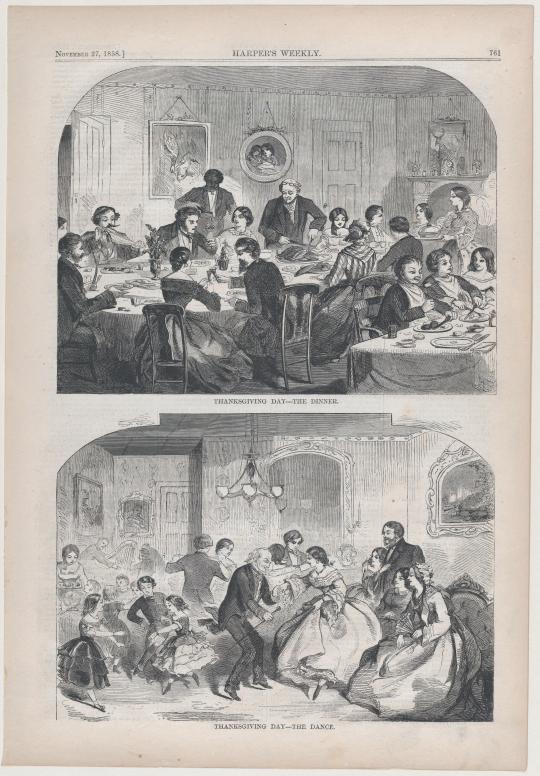
With America's Thanksgiving holiday on the horizon, it is crucial to delve deeper into the historical context and dispel the sanitized notions surrounding the colonization of the "New World" by Europeans. While the Europeans considered this land new, it was home to Indigenous peoples for generations, with rich cultures and traditions that often go unacknowledged.
Thanksgiving was established as a national holiday in 1863 by President Lincoln, during a time marred by the deeply divisive Civil War. The intention was to foster a sense of togetherness among the American people. However, the holiday's origins are rooted in notions of peaceful coexistence between European Pilgrims and the Native Americans already residing in the Plymouth region. This narrative, though popularized, is built on flimsy foundations, as it only represents a few decades of relatively minimal conflict between the Pilgrims and the Wampanoag.
Contrary to common belief, the Pilgrims' gratitude for surviving their initial winter was not directed towards the Wampanoag, whom they viewed as instruments of God's will, but rather towards God himself. It is important to acknowledge that while there may have been a period of relative peace, primary sources reveal an underlying sense of white superiority rather than a genuine atmosphere of open cultural exchange.
The initial cooperation and mutual assistance during the early 17th century gave way to a chapter in history characterized by brutal violence and the detrimental impacts of colonization. As European settlers expanded their presence, territorial disputes, cultural clashes, and the introduction of diseases took a devastating toll on Indigenous communities. The narrative of Plymouth Colony's early years must be examined in its entirety, recognizing the complexities and consequences that arose from the subsequent period of colonization.
By delving into these historical details, we can gain a more comprehensive understanding of the complexities surrounding Thanksgiving and its historical context. Learn more in this Open Access book chapter: "Pilgrims and Puritans and the Myth of the Promised Land."
🖼️ : Winslow Homer (American, Boston, Massachusetts 1836–1910 Prouts Neck, Maine), “Thanksgiving Day – The Dinner (from ‘Harper’s Weekly,’ Vol. II).” Wood engraving, November 27, 1858. The Metropolitan Museum of Art.
145 notes
·
View notes
Text
HSR THEORIES - PENACONY ANALYSIS
I guess I'm late to the game, but I'm normally a lore gremlin for Xianzhou lore, not Penacony lore. Anyways, don't expect something very elaborate, but you'll be able to find :
Reflection on the period based on history (Penal Colony)
Reflection on the period based on fashion (NPC in trailers)
Reflection on the period based on architecture (Art Deco)
Reflection on the period based on cultural shift (Railway Mania, Department Stores)
Reflection on lore based on Literature (Jules Vernes, Herman Melville)
Reflection on lore based on Philosophy (Idealism, Utilitarianism, Transcendental Idealism)
Everything under the cut as always since I tend to babble.
The name "Penacony" possibly comes from the phrase "penal colony".
I'm certainly not the first to make the connection, but "Penal Colony" inevitably brings to mind Australia. This idea of "Space Australia" is also reinforced by the names for the characters we know at the moment, with a very clear English etymology : Sunday, Robin, Gallagher, Firefly.
The use of Australia as a "penal colony" by England took place after the American War of Independence, so we start with a period around 1780 to ~1870.
youtube
We didn't get to see a lot of NPC outfits in this very short clip, but what little there is could actually correspond to a period like this. However, we had a little more hints in Honkai Star Rail - Penacony Trailer | Game Awards 2023, where we see Acheron at the reception of the Reverie hotel :

This NPC in particular is interesting, because of her gloves. It's called "evening gloves" or "opera gloves". They were popular during the Napoleonic period (1800-1825) but were also very fashionable in the last two decades of the 19th century, i.e. 1880-1900 and before WWI, i.e up to 1910.
In terms of temporality, it is also important to note what concerns the architecture of Penacony.
It was noted on Reddit that the style of architecture could be reminiscent of the French Art Deco style, an architectural movement predominant in the 1910s to 1920s. Art Deco is said to have represented "luxury, glamour, exuberance, and faith in social and technological progress", so quite fitting for Penacony. Key features were : geometric/sleek designs, bold colors, luxurious materials, things that we find in the previews.
We'll have to wait to see more from Penacony, but it might be interesting to see if there is also any inspiration from the previous movement, Art Nouveau 🤔
Another architectural thing :
Look up and see the metal tracks crisscrossing the skyscrapers and the Spheroids rapidly rolling along them. They are the most visible means of transportation in this dreamscape metropolis and guide guests to each and every place around the city. [x]
This part about the Spheroids is interesting, because during this period (starting from 1825, with a peak in the 1840s), there was in France and England what we called the Railway Mania.
This is a point of interest because the Railway Mania saw the the arrival of the railroads in Paris. When it happened, this caused another major cultural shift : the rise of Department Stores. There is even a well-known french novel on the subject, called Au Bonheur des Dames (The Ladies' Delight) by Emile Zola.

The end of the 19th century is also the period of birth of modern advertising and given the number of things that we see plastered all over Penacony, I think I can say that we are on the right track/period.
So, in terms of rough "era", we can go from 1780 to ~1920, so mostly the 19th century (1800-1900).
Speaking of period culture and Penacony in general, we currently have a Relic Set which I will use for the rest of the post: Penacony's Dream-Seeking Tracks
Opening a window no longer show a view of the stars in the deep sky, but of the city's shifting streams of light and shadows, holding up the constant echoes of giant clocks and theaters.
Okay, let's start with some details that I only noticed because I come from a literary studies background. I'm not going to lie to you, it's far-fetched, but stay with me, I promise it's interesting.
Giant clocks and theaters made me think "steampunk" works, whose setting are often set in an alternative history of the Victorian era (~1837 to 1900, so right in our period). One of the pioneering writers of the genre, “proto-steampunk” so to speak, is Jules Vernes, considered one of the "father of science fiction".
Remember Spheroids ? : "Spheroids are regarded as both vehicles and as toys in the land of dreams. However, few remember that the Spheroids are actually imprisonment cages — the vehicle towards dreams are tools originally used for locking up prisoners."
One of Jules Vernes' best-known novels is Twenty Thousand Leagues Under the Seas, a science-fiction aventure novel the majority of which takes place aboard the Nautilus, a submarine belonging to Captain Nemo. And interesting thing, "he also tells his new passengers that his secret existence means he cannot let them leave — they must remain on board permanently" ; They are prisoners in the Nautilus.
On another point, Jules Vernes is also considered as having had a strong influence on the surrealist movement "in which artists depicted unnerving, illogical scenes and developed techniques to allow the unconscious mind to express itself. Its aim was, according to leader André Breton, to "resolve the previously contradictory conditions of dream and reality into an absolute reality, a super-reality", or surreality"." Quite fitting for our dream planet.
For the next one... Well. I have no excuse for this one, it's even more far-fetched. But so, we remain in the literary universe.
The water from the spring turn into a giant whale and swim through the halls.
Giant whale made me think of one thing almost immediately : Moby Dick, by Herman Mellville, published in 1851 (once again in our era of interest). Moby Dick is a "sea novel" centered around the figure of the hunt of a whale. It's main themes are the limits of knowledge, fate and free will, nature and man, race, fellowship, and enslavement, madness and religion [x].
I wont copy and paste the whole shtick but I send you check again The Family description from the Data Bank.
With that, we're done with literature... so it's time to move on to something else wonderful and terrible, the greatest enemy of my high school years (when you have to do it for 8 hours a week, it quickly becomes tiring), I named: PHILOSOPHY.
For a transcendent experience, for an inspirational excitement, for the soothing of worries and wounds — guests of the highest caliber come to surrender their pain in exchange for peace and tranquility
I'm not going to dwell on that for too long, quite honestly. I'll just... put that here for you to do whatever the fuck you want with it.
Idealism : "Idealism in philosophy, also known as philosophical idealism or metaphysical idealism, is the set of metaphysical perspectives asserting that, most fundamentally, reality is equivalent to mind, spirit, or consciousness; that reality is entirely a mental construct; or that ideas are the highest form of reality or have the greatest claim to being considered "real"
At some unknown point in time, the small cells cut off access to reality, but people's consciousnesses became linked in dreams. In the midnight bell, that shared dream seemed so real, reflecting the sheer hypocrisy of reality.
Utilitarianism : "a family of normative ethical theories that prescribe actions that maximize happiness and well-being for the affected individuals. In other words, utilitarian ideas encourage actions that ensure the greatest good for the greatest number."
Those who follow the "Harmony" Path admire understanding, support, and cooperative behavior.
In addition to all previously "said", one of the greatest thinkers of the time, who is also the one at the origin of the definition of transcendent, is Immanuel Kant. His best known work is Critique of Pure Reason (1781), with which "he aims to reach a decision about "the possibility or impossibility of metaphysics".
Metaphysics "is the branch of philosophy that studies the fundamental nature of reality. This includes the first principles of: being or existence, identity, change, space and time, cause and effect, necessity, actuality, and possibility."
This work was the founding work of a philosophical doctrine known under the name of Transcendental Idealism. I'll spare you the convoluted explanations but look at that :
The scenery gradually becomes more and more incredulous, and the senses feel as if one has been lifted by silk. [...] The guests finally realize that they were never awake, but are instead witnessing Penacony's true nature in a dream — a place where time stops in a neverending dreamscape.
"Kant means that his philosophical approach to knowledge transcends mere consideration of sensory evidence and requires an understanding of the mind's innate modes of processing that sensory evidence".
"Kant outlines how space and time are pure forms of human intuition contributed by our own faculty of sensibility. Space and time do not have an existence "outside" of us, but are the "subjective" forms of our sensibility".
74 notes
·
View notes
Text
Why do so many Blue states have Red governors and so many Red states have Blue governors?
Short answer: Because when you are under attack constantly irl, you don't take your rights for granted.
The Governor of Kentucky (and potential VP pick ((crossed fingers)) ) Beshear is STAUNCHLY pro-trans, pro-choice, and pro-union.
Beshear is ALSO one of the most popular governors in the COUNTRY
Keep in mind that Red states suffer from gerrymandering and voter suppression every year. And they have BLUE, PRO-TRANS governors.
If you are in a Blue state with a Red governor. It's because people aren't voting.
As a former Tennessean, If you are able to vote and don't, I'm going to assume you are 1, lazy, and 2, ungrateful. People who fought for your rights were taking direct action and you can't even GO OUTSIDE AND CHECK A BOX??? Shameful.

1920, This sign was designed to be placed in the window of a home so that all who passed would know that the woman within had exercised her right under the 19th amendment and registered to vote. It also served as a reminder to other women to do the same. -Smithsonian

Oklahoma Federation of Colored Women's Clubs, American, founded 1910, National Association of Colored Women's Clubs, American, founded 1896 - Smithsonian, National Museum of African American History and Culture
And you can't even check a box.
Don't complain if you choose not to vote. If you ARE voting (thank you), talk to your friends and relatives about it. Talk to them about how Red states & Southern states are coming up with revolutionary policy and are changing people's lives for the better BECAUSE PEOPLE VOTED.
There are Native Americans fighting for citizenship who can't vote.
100 years ago, U.S. citizenship for Native Americans came without voting rights in swing states
When you have the right to vote (and the time & money because voting day isn't a holiday + not everyone is old enough), but choose not to, you are spiting in their faces.
Register to vote, be the change you want to see this year. It takes about two minutes.
If you are under 18, Pledge to vote
#politics#us politics#world politics#lgbt#lgbtqia#lgbtq#lgbtq+#queer#kamala harris#joe biden#donald trump#trump#2024 elections#election 2024#us elections#american politics#project 2025#black history#african american history#civil rights#american history#civil rights movement#us history#feminism#feminist#intersectional feminism#intersectionality#trans rights#transgender#aroace
14 notes
·
View notes
Note
yo interested in the reading recs on the body fascism thing 👀
ok disclaimer that i have various problemsissues with almost all of these & would love for somebody to theorise this better some day
on exercise, sport, and physical activity:
sport and physical culture in occupied france: authoritarianism, agency, and everyday life, by keith rathbone
body fascism: salvation in the technology of physical fitness, by brian pronger
'against exercise', by mark greif
the sculpture machine: physical culture and body politics in the age of empire, by michael anton budd
the expressiveness of the body and the divergence of greek and chinese medicine, by shigehisa kuriyama
empire of ecstasy: nudity and movement in german body culture, 1910–1935, by karl toepfer
ideals of the body: architecture, urbanism, and hygiene in postrevolutionary paris, by sun-young park
on fatness and weight stigma:
fearing the black body: the racial origins of fat phobia, by sabrina strings
being fat: women, weight, and feminist activism in canada, by jenny ellison
seeking the straight and narrow: weight loss and sexual reorientation in evangelical america, by lynne gerber
on food and dietetics:
eating right in america: the cultural politics of food and health, by charlotte biltekoff
modern food, moral food: self-control, science, and the rise of modern american eating in the early twentieth century, by helen zoe veit
diet and the disease of civilization, by adrienne rose bitar
eating nature in modern germany: food, agriculture, and environment, c. 1870 to 2000, by corinna treitel
59 notes
·
View notes
Text

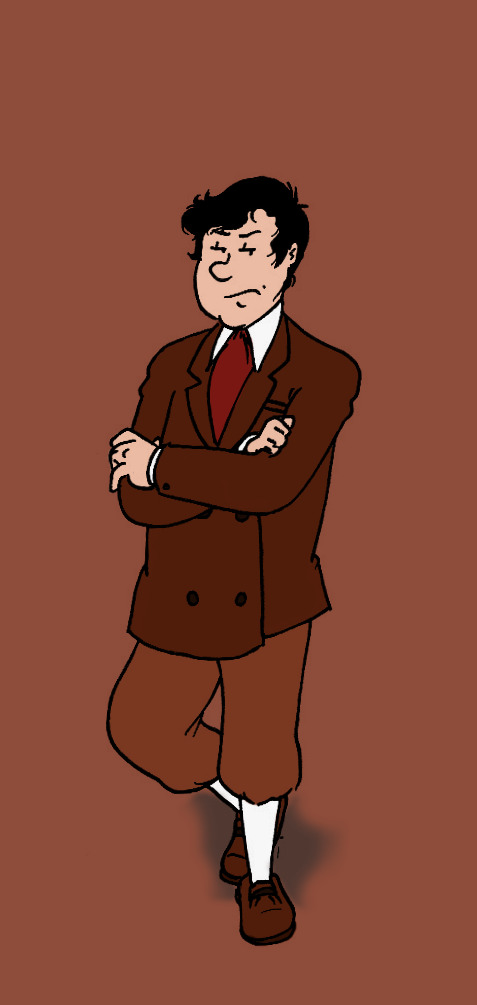




Inspired by @professorcalculusstanaccount's timeline posts, it's Roberto Rastapopoulos through the years! No little Greek boy don't grow up to be a massive shithead--
Rasta is a very difficult character to understand in canon, because so much of his lore is left unknown to the viewer. However, there were little bits and pieces, some in Herge's tertiary studio notes; over time I've wrung some water from that stone, and put together this timeline in my head. I went with a more condensed range than ProfCal (i.e. pre-canon up to canon, rather than into post-canon), since Rob does technically "die"/disappear by the end of the (finished) comics.
Headcanons and details under the cut:
According to speculative official notes, he was born in the 1890s in Leros. It's a beautiful island but also one with a turbulent history, as when little Roberto was born, that part of Greece was under control by the Ottoman Empire. His father was a sponge diver, which was a very viable career at the time. (Decades later, the industry would be ruined when the area's sea sponges were over-harvested by bigger diving operations.) His mother is basically unknown...many official outlets say Rastapopoulos is part American, so I imagine his mother was of Greek-American heritage who either met his father abroad or in America.
There were two real-world figures who influenced my timeline: Aristote Onassis and Aleister Crowley. Onassis was one of Herge's later inspirations when writing Rastapopoulos, and for good reason; much like Rastapopoulos's own immoral dealings, Onassis indiscriminately sold warships during WWII and can easily be considered an arms dealer who profited off of human atrocities. On the other hand, Aleister Crowley was my own connection. All the pseudo-Egyptian mysticism in Cigars of the Pharaoh and the Kih-Oskh Brotherhood seems to be a reference to the very real trend in the early 20th Century where the upper crust of western society became fascinated with esoteric beliefs. (Seances and the Ouija Board were also created during this era.) Crowley rose in infamy during this time, too, as a spoiled debutante who spent his inheritance on journeys through the MENA region to perform rituals and "adapt" Eastern religions for his own belief system. With Rastapopoulos making up an entire pharaoh and emblem for his secret trafficking club, it reminded me very much of Crowley's own endeavours, and the commodification of MENA cultures and iconography during this era.
Child (1897) - Canonically, he has three brothers and two sisters, so l envisioned him as the middle child amidst all that. Little Roberto was spoiled when he was little, but when his youngest brother was born, it left Roberto feeling like the attention had been stolen from him.
15 (1906)- The other siblings hoped Roberto would be just as enthusiastic as they were about the family diving business, but alas, he'd always been more interested in reading prose and classical plays. His favourite play is Gounod's Faust. Some days, he daydreams about what a deal with the devil could get him, thinking he'd be able to outsmart the devil and win his riches for free.
Roberto was at a rebellious point in his life, and sadly, he'd come to be ashamed of his background, deciding sponge diving was "peasant work" and that he'd rather tell others he was British or American. Eventually, it became easier for the whole family to just send him to a boarding school. Deep down, Roberto's parents hoped he might become an actor, a writer, or some sort of scholar...but the night before he left, Roberto secretly took down his whole family's banking information.
20s (1910s) - Roberto is now in his "Aleister Crowley's world tour" phase. He throws around mysteriously large quantities of money, often putting it into investments, and taking many journeys through Egypt and India. (I also like to imagine he met the Fakir and Colonel Fuad around this time; maybe Zloty too). Rastapopoulos is an insufferable, preening dandy at this time, trying to carve out his own place among the societal elite. His Greek identity is only flaunted as a way to make him seem more "exotic" to strangers. He tries not to think about the bank accounts he's leeching from.
30s (1920s) - Several of his investments actually flourished. His shares in Arab-Air and Flor Fina yield enough profit to let him buy out the companies, and his decadence only increases as he reaps even more profits. With extra money going around, Rastapopoulos finally decides to foray into the movie industry...as a movie producer. His passion for theatre never died, and if he can't become an actor himself, then why not produce the kinds of stories he wanted to be in?
By the time the Great Depression hits, Rastapopoulos has amassed more than enough wealth to stay afloat...and the drug ring he's started with a few good friends sure helps, too. He's more concerned with holding onto every millimetre of his receding hairline.
40s (canon) - By all means, Rastapopoulos could have disbanded the cartel and retired comfortably. Maybe he could have invested more in his own movies, and focused more on Cosmos Pictures's internal operations. And yet, he didn't. Bigger numbers are better, so Rastapopoulos kept amassing his dirty money, thinking he was too big to fall. He got messy and left behind some viable clues, which some Belgian kid happened to stumble across...
50s (1940s-early 50s)- "Roberto Rastapopoulos" may be out on bail and facing decades in prison, but "Marquis Dante di Gorgonzola" is just some mysterious financier with an offshore bank account. Some of the other societal elites recognize him, but they find the alter ego funny and play along; "Oh, here comes "the marquis"...! He's due back in Hong Kong!" He can't make money through drug trafficking anymore, he can't show his face in Hollywood, and he certainly can't go back to Greece. Unfortunately, some of his associates introduce him to a different kind of trafficking, one even more immoral, but just as lucrative...
It's the climax of the Rastapopoulos family tragedy: the son of hard-working commoners has ground his family's name into dust thanks to his pursuit of power and decadence; he has now resorted to deceiving those same sorts of commoners, dooming them to unknown fates just so he can buy a boat. Later, he begins resorting to harebrained schemes and petty crime just to maintain that lifestyle. His Greek identity has long been buried in favour of a vague, exotic cultural identity meant to explain away his quirks and twitchiness.
I've long been torn on whether or not Endaddine Akass is Rastapopoulos's final form. Herge's notes do consider him surviving Flight 714 to Sydney by waking up in the tropics with some degree of amnesia...perhaps this is near Jamaica, where he'll meet Ramo Nash under a new identity. It also feels the most theatrical - Rastapopoulos is playing yet another role, and he has a grand finale planned for Tintin's murder. Additionally, the mysticism Akass totes in Alph-Art is inspired by the alternative religion fads of the 1960s-70s; Akass is evocative of some of those many cult leaders, like Bhagwan Shree Rajneesh or Father Yod.
And yet, I almost find it more fitting for Rastapopoulos to survive Flight 714 to Sydney with full amnesia. He only knows himself as some middle-aged vagrant, and he decides he just has to pick himself up, and find some odd jobs to make a living. He gives himself a new name; his family history has been wiped clean. He struggles to make ends meet, much like the family he bankrupted, though he'll never know just how ironic his life has become. The rest of the world knows Rastapopoulos as a bombastic, flashy debutante who died a pitiful death during a police standoff. Tintin feels like he saw him one last time, but it feels like a bad dream he had during a flight layover. The man who always wanted to be the biggest and best died quietly in the sea, his true fate unknown, his body forever missing.
I think that's why I find Rastapopoulos so fascinating as a character! You can either make him into Tintin's greatest scourge who fights to the death to maintain his status, or you can rip all that away and doom him to a humble existence.
50 notes
·
View notes
Note
halloween is a celtic festival, it was brought over to the americas by scottish & irish immigrants. you might be thinking of the phrase "trick-or-treat" which is definitely canadian?
@77bears You're absolutely right, it started in Celtic British cultures.
I was referencing the gif that called Halloween an "American holiday" but I probably should have made it more clear that I meant in the sense of "in the Americas".
But modern Halloween as a whole is, as far as we have evidence for, a Canadian invention. One of the earliest mentions of people dressing up and going door to door is in 1898 in Vancouver:

^ Vancouver Daily World (Vancouver, British Columbia, Canada) Wednesday, November 02, 1898, pg. 6.
though there are earlier mentions of Halloween in Canada dating to at least 1820.
By 1910 in Winnipeg, we have the first recorded evidence of Halloween being widespread, as Halloween candy buckets were being advertised:

^ The Winnipeg Tribune (Winnipeg, Manitoba, Canada) Tuesday, October 18, 1910, pg. 10.
Halloween pranks were first reported in an 1898 Vancouver newspaper article saying that Halloween pranks would not be a problem that year.
And, like you mentioned, "trick or treat" was first recorded in Canada -- in 1927 in Blackie, Alberta (only a few hours away from where I live!)
#halloween#happy halloween#canada#ask response#i'm just saying#world history#halloween history#did you know#random facts#alberta#united states#trick or treat#canadian history#holiday
26 notes
·
View notes